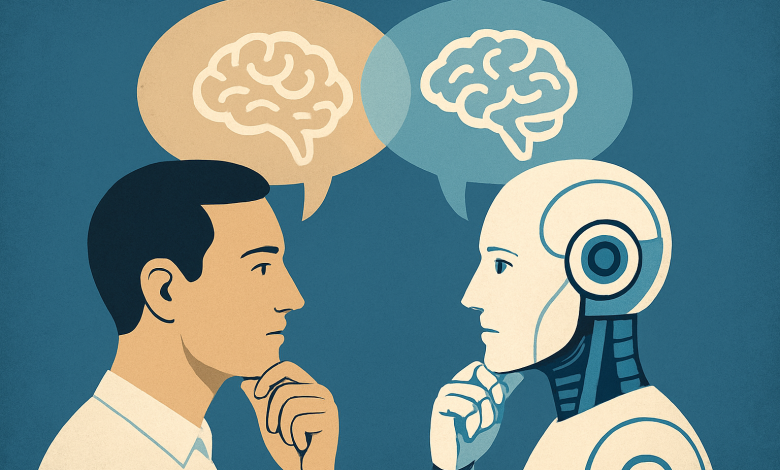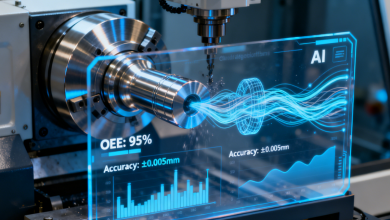
“You can’t think about thinking without thinking about thinking about something.”
― Seymour Papert, 1980
The history of humankind is inseparable from the history of tools and invention. Each innovation not only changed our range of capabilities, but the very architecture of how we think. This is not a new observation, though it is often simplified or misquoted. Each new tool has expanded our boundaries of thought, imagination and inquiry.
Today, artificial intelligence joins this evolutionary arc. New AI tools emerge every day. Many are remarkable, even transformative, in their ability to accelerate productivity, whether summarizing texts, generating answers or streamlining workflows. Yet in fields defined by their complexity, what matters most is not speed but the quality and depth of thought. This is where AI begins its higher calling: to expand human thinking by serving as our partner in reflection and discovery.
Beyond Outputs: Shaping Thought Processes
Thinking is inherently non-linear. It is iterative, uncertain and often contradictory. It demands both imagination and discipline, intuition and systematic analysis. Dialogue has always been its natural form. We sharpen ideas through conversation, test our assumptions against other minds, and generate insight through discussions.
AI systems, especially large language models (LLMs), extend this tradition of dialogue and may be the most powerful tools currently available to support such processes. They can be designed to structure reasoning step by step, expose latent assumptions and highlight blind spots, while adapting to specific organizational needs. In essence, they can support us as we navigate multifaceted challenges, creating new ways for meaningful explorations.
For those working at the intersection of science, technology and innovation, this capacity is essential. These are domains where solutions are rarely simple, and decisions demand weighing factors like scientific depth, technological feasibility, market dynamics, regulatory realities and ethical responsibilities. A well-designed AI tool can support such practices.
This philosophical shift should guide how organizations design and use AI systems, not as a black box that delivers conclusions, but as collaborators in the continuum of work that helps test hypotheses, refine frameworks and expand the space of possibilities, with human creativity and judgment remaining a central part of the process.
Making it Work
Realizing this vision requires conscious design choices. AI systems should be constructed on some key design principles.
- Knowledge Structuring: Translating organizational philosophy, decision criteria, and tacit know-how, into forms that the system can encode and leverage during reasoning.
- Contextual Integration: Designing the system to draw on multiple input sources – rules, data, constraints, and context – and balancing them when analyzing situations or framing judgments.
- Exploratory Co-creation: Enabling the system to generate alternative scenarios that broaden options during dialogue, while leaving room for human judgment.
- Transparent Reasoning: Exposing the system’s reasoning steps so users can follow, engage and refine its thought process.
- Continuous Learning: Incorporating feedback loops that capture both data and recurring reasoning patterns, allowing intelligence to compound over time.
These design challenges are by no means trivial, and the scope and complexity will vary between organizations. Yet once applied, an AI platform built around a group’s knowledge, practices, and principles, can support more complex scenarios, amplify collective insights and keep reasoning grounded in both evidential and organizational values.
The Coevolution of Humans and Technology
When our early ancestors harnessed the power of fire, they not only gained warmth and protection, but also time for storytelling and knowledge sharing that carried across generations. The emergence of writing around five-and-a-half thousand years ago externalized these memories, reshaping how ideas were preserved and shared. The invention of the printing press over four thousand years later multiplied and disseminated that knowledge, sparking revolutions in science, politics, and philosophy. Fast forward to the twenty-first century and computation has allowed us to model complexity on an unprecedented scale, unlocking innovative strategies for problem-solving.
Artificial intelligence is the continuation of this lineage. Like writing and computation that preceded it, AI is changing the terrain of thinking itself. LLMs are perhaps the clearest expression of that change. By extending our ability to reason across vast datasets, trace unseen connections and simultaneously explore multiple scenarios, they reveal assumptions and trade-offs that might otherwise remain hidden.
As we continue to design and refine these systems, they will inevitably reshape how we reason, create and make decisions. The challenge – and opportunity – will be to design this relationship deliberately, ensuring that AI enhances rather than diminishes, scaffolds rather than shortcuts, and expands rather than narrows the horizons of human thought and intelligence.
This is not a distant prospect but an emerging practice. Organizations that embrace AI as a true thinking partner will cultivate new habits of reasoning, richer forms of imagination and more deliberate ways of navigating complexity and uncertainty.
Through this conscious coevolution between human and artificial intelligence, the future of innovation will be written not by humans or machines alone, but through their collaboration. The question is not whether this transformation will occur, but how we can guide it with the wisdom and intentionality that such a profound shift in the nature of thinking itself demands.




